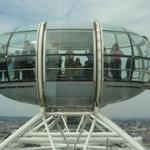@bergfreundInteressant - mal ein anderer Aspekt.
SpoilerAber wieso nur komme ich sofort auf den Gedanken, dass es deinem Schneebrett sehr entgegenkommt, je unerfahrener die Gruppe ist, sodass sie sich ahnungslos auf einem Lawinenhang bettet? ;)Seit wann hat Teddy eine Reputation in der Bewertung russischer Wanderer im Jahre 1959?
Was macht sie in dem verlinkten Beitrag? Einen eingeschnappten Fakten-Check eines Artikels des Thriller-Autors Douglas Preston. Sie wurde von ihm nicht hinreichend gewürdigt, sagt sie:
I, Teodora Hadjiyska, and Igor Pavlov consulted the author with information on the case since Dec 22, 2020. Unfortunately our theory was not included and we were not given credit in the article for the assistance we provided. However, as consolation Douglas Preston left me the following endorsement:
"The Dyatlov Pass Incident is one of the most confounding mysteries of the 20th century. Since it occurred in the Soviet Union sixty two years ago, it has gained world-wide fame and an international following, resulting in dozens of books, articles, and documentary films. Teodora Hadjiyska is one of the world’s foremost authorities on the Dyatlov enigma and also the creator of Dyatlovpass.com, the most comprehensive website on the subject. I highly recommend her work!"
— Douglas Preston, International bestselling author and journalist
To be worthy of the praise we were compelled to take one final look over the article for fact check
Quelle:
https://dyatlovpass.com/nym?rbid=18461Wie auch immer.
Er behauptet:
They were among the élite of Soviet youth and all highly experienced winter campers and cross-country skiers.
Sie hält dagegen:
They didn't even have official sports grades because their papers were not in order. They were no elite, just ordinary hikers. Check their hiking experience.
Die
hiking experience ist verlinkt, so wie ich sie hier verlinke. Ob das nun viel oder wenig ist, ob Anfänger, ob Elite-Niveau sei dahingestellt. Wir brauchen Teddy Einschätzung nicht. Und was heißt schon "normal hikers"? Wer damals diese Touren machte, war so normal nicht. Das war halt kein entspannter Ausflug.
Wer ihre Qualifikation besser einschätzen kann, und sie haben es ja lang vor Teddy getan, sind u. a. Maslennikov, der die Tour mit diesen Teilnehmern freigegeben hat und die Qualifikation der Teilnehmer als ausreichend erachtete:
In the second half of December of 1958 UPI student Igor Dyatlov and someone else of the students came to me in the Sports Club and told me that they have a proposal to organize a trek category III (the highest) for the Northern Urals. The route was not discussed in detail at this time, only the general idea - to go from Ivdel to the ridge, started discussing who can join the group. Dyatlov then mentioned Kolmogorova and some other names.
I knew the area and knew the members of the group and therefore in principle didn't oppose to such a expedition.
after the conversation with me Dyatlov and other members of the group met with the chairman of the sports municipal section Bogomolov, with members of the Route commission Novikova, Korolyov, as well as Karelin and other activists.
My next meeting with the participants in the expedition took place on 08.01.59 All group members came to me at the club and showed me a plan of the expedition. The project presented the route, a brief description of the expedition, the inventory of public and personal equipment, performance overview of the members of the group, and the budget for the expedition.
I made three suggestions:
1) to assign ranks to the participants in the expedition
2) include the reimbursements in the plan and
3) move ahead the control return dates
The In the plan of the expedition each participant had the number of hikes listed by category of difficulty. However, not all of the credits have been accounted for. When I discussed this with the participants in the expedition, I found out that some of them were already eligible
for a higher rank, but they haven't done it. It was in their interest to assign the correct ranks right away. I don't remember now the ranks of the participants and the corresponding sports category, but then, in the conversation, we clarified this.
The fact is that to obtain, for example, 2nd category one must have five expeditions, of which 3 expeditions must be of category 1 and 2 expeditions of category 2. Zina Kolmogorova, for example, had 6 expeditions, including a 4 expeditions of category 2 and 1 expedition of category 3. She already had the right to get a category 2. This was my first suggestions to their plan.
Quelle:
https://dyatlovpass.com/case-files-62-75?rbid=17743Sogrin gab Folgendes zu Protokoll:
I enrolled in the institute in 1955 and started working in the hiking section. In the first days I met with Dyatlov and other hikers. In the section there is a certain grouping of its members. These groups are usually named after the most initiative comrade - the usual leader of the group. Dyatlov was the kind. Almost from year to year he was the leader of the campaigns, beginning from the category I and ending with the most difficult category III. Two years Dyatlov worked in the bureau section. Less experienced hikers always turned to him for advice on technology and tactics. In the winter of 1958-1959, Dyatlov began to prepare new expedition of which the whole section knew. Initially, the expedition was supposed to be carried out in the Subpolar Ural, but since this area required a lot of time, it was abandoned and the Northern Ural was chosen - the region is easier and more accessible. I myself was also in midst of a preparation of a category III trip to the Subpolar Ural, and Dyatlov and I often talked about our routes, shared our experience, jointly decided on some or other issues of preparation, tactics on the route.
Quelle: Quelle:
https://dyatlovpass.com/case-files-330-339?rbid=17743In seinem Buch schreibt Sogrin (Rohübersetzung):
In jenen Jahren war der Sporttourismus bei UPI-Studenten sehr beliebt. Sie reisten sowohl im Winter als auch im Sommer in schwer erreichbare und wenig erforschte Gebiete des Altai. Sayan, Tien Shan, Transbaikalia, Ural ... Auch Aufstiege auf Berggipfel waren beliebt ...
Sporttourismus und Bergsteigen wurden mit der Zuordnung von Rängen und Titeln bis zum
"Master of Sports" in die Sportklassifikation aufgenommen. Diese beiden Arten wurden in die
Gruppe aufgenommen angewandte und Verteidigungssportarten und daher vom Staat unterstützt und finanziert.
In vielen Instituten und Unternehmen in Swerdlowsk arbeiteten Bereiche des Tourismus und des
Bergsteigens aktiv. Die Kontrolle über die Vorbereitung von Kampagnen und Aufstiegen war in
diesem gebauten System positiv. Ein Anfänger musste einige Erfahrungen in einfachen
Wanderungen und Anstiegen sammeln und sich erst dann für die Teilnahme an komplexeren
Veranstaltungen qualifizieren.
Im Tourismus gab es also drei Schwierigkeitsstufen. Touristen mit langjähriger Erfahrung in
einfacheren Wanderungen hatten das Recht, an der dritten - der höchsten - teilzunehmen. Es gab
höhere und strengere Anforderungen an die Führer.
Es gab fünf Kategorien von Schwierigkeiten beim Bergsteigen.
Unerlaubtes Reisen ohne Inspektion und Erlaubnis war verboten. Jede Gruppe musste in der
Streckenkommission Zutritt zum Ausgang erhalten und ein "Streckenbuch" haben.
(...)
Es gab zwei Stärkste mit langjähriger Erfahrung und Führungspersönlichkeiten in der Sektion:
Sergei Sogrin und einen Studenten der Fakultät für Funktechnik im fünften Jahr - Igor Dyatlov.
Sie waren diejenigen, die im Januar 1959 die höchste Kategorie beanspruchten. Andere gingen auf
weniger schwierigen Strecken (1. und 2. Kategorie).
(...)
Der zweite Führer in der Sektion war Igor Dyatlov.
Nach seinem Eintritt in das Institut erwies er sich von den ersten Tagen an als nachdenklicher und ernsthafter Teilnehmer nicht nur an Kampagnen, sondern auch als Führungskraft mit
organisatorischen Fähigkeiten. Und eine Gruppe bildete sich um ihn herum.
Ein Jahr zuvor nahm Igor als Teil der Nationalmannschaft an einer Winterwanderung im subpolaren
Ural teil. So kam es, dass sich auf dieser Reise drei Personen: P. Bartolomey, I. Dyatlov und N.
Khan - in einer äußerst kritischen Situation ohne Zelt und andere notwendige Ausrüstung
befanden. Igor übernahm die Führung und konnte sich innerhalb weniger Tage ohne Verluste und
Erfrierungen mit der Hauptgruppe verbinden. So hatte er wie Sergei Sogrin genügend Erfahrung,
um die Route durch den Nordural der 3. Kategorie als führend zu deklarieren.
Seine Dauer und Komplexität passen zu den damals bestehenden Anforderungen für die Strecke der
3. Kategorie: Mindestens 16 Tage, eine Länge von 300 km und andere Bedingungen entsprachen
vollständig den Vorschriften.
Nach sorgfältiger Vorbereitung, die lange dauerte, trafen wir uns am 23. Januar am Bahnhof. Fast
zeitgleich verließen unsere Züge den Bahnhof Swerdlowsk
Quelle: S. N. Sogrin: DYATLOV PASS - WAS DIE SPUREN ERZÄHLEN
Was machen wir daraus: Ich jedenfalls mache daraus, dass sie keine "normalen Wanderer" waren - außer man meint es so, dass es normal war, in diesen Gebieten zu wandern. Aber die Art und Weise dieser Touren unterscheidet sie doch grundlegend von Wochenendausflügen, wie sie Normalbürger unternehmen.
Es waren ambitionierte Sportler, die eine beachtliche Leistung an den Tag gelegt haben, wie auch Michael Holmgren feststellte, als er die Route nachverfolgte. Ob es nun Elite ist? Man kann es sicher auch so sehen. Es ist von keinen Studentengruppen die Rede, die das deutlich überboten hätten.
Sie berichten im Tagebuch selbst, wie sie Strategien entwickeln, um gleichzeitig eine Spur zu ziehen und das Gepäck effizient zu bewegen,. Das waren schon noch Pionier-Jahre auch wenn der Tourismus schon ein paar Jahre alt war. Dass sie mehr als die Basics über das Gebiet und seine Eigenheiten wussten, darf man wohl auch voraussetzen. Absolute Basics sind sicher Kenntnisse über Lawinengefahr.







